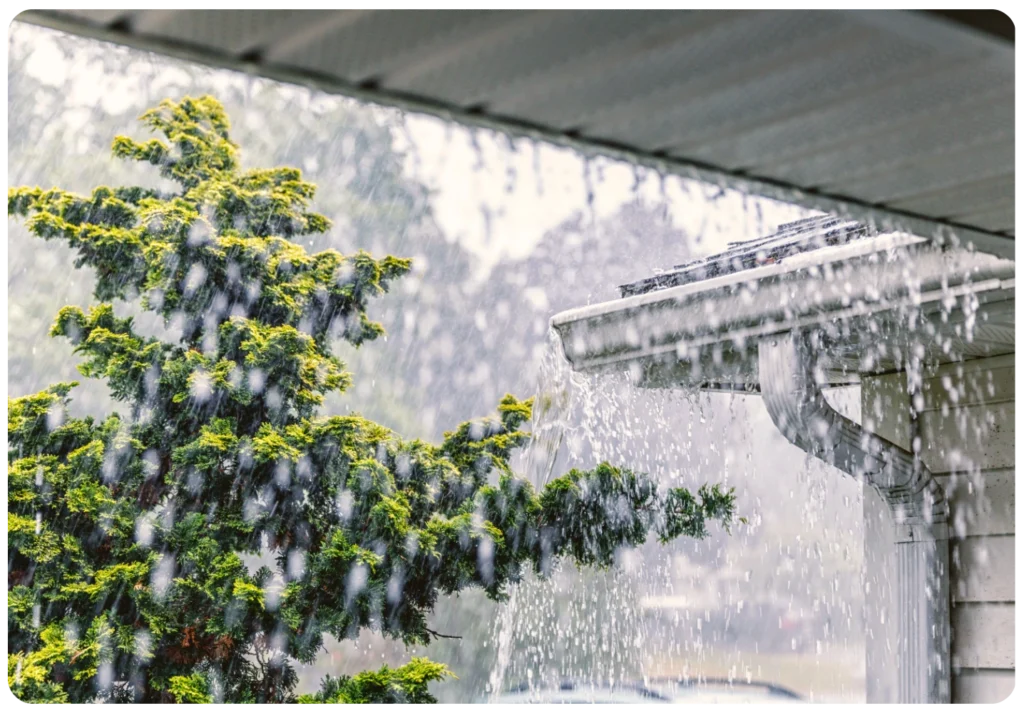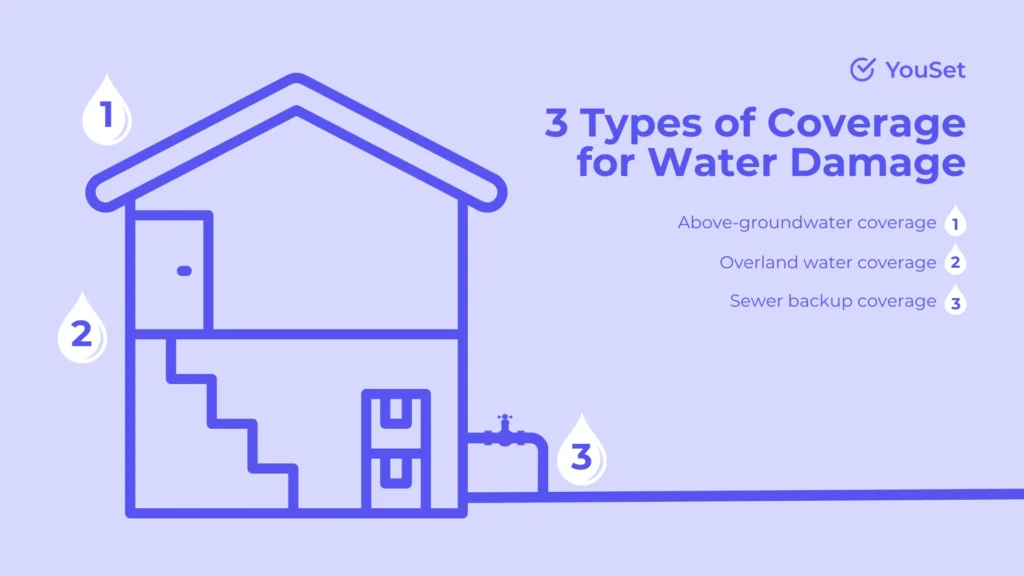Water damage is one of the most frequent types of insurance claims for homeowners, renters, and condo owners. Among YouSet users, it’s the leading claim in Quebec and the second most common in Ontario, with average claim amounts ranging from $9,000 to $12,000. Given how common these incidents are, above-ground water coverage is an important consideration if you’re looking to protect yourself from expensive repairs and replacement costs.
If you’re currently deciding whether you should get this kind of coverage, this article will likely help as it contains answers to the most frequently asked questions, including what it is, what it covers, and the difference between it and other types of water coverage.

What is above-ground water coverage?
Above-ground water coverage is a type of home, condo, and tenant insurance coverage that protects against sudden and accidental damage caused by water entering your home from sources above ground. So if your property or personal belongings are damaged due to this type of incident, this type of coverage can provide financial compensation, covering some or even all of the repair or replacement costs.
Here are some examples of common situations in Canada, where the climate and weather conditions can lead to above-ground water damage.
- Water seeping through windows, doors, or walls during heavy storms
- Overflowing eavestroughs or downspouts during intense rainfall
- Wind-driven rain forcing water into cracks or gaps around windows and doors
- Weight of accumulated ice, snow, or wet snow on the roof
- Water entering through open windows during a storm
- Water pooling on flat roofs and leaking inside
Bear in mind that, unlike standard coverages for perils such as fire and theft, you will find that many insurance companies classify above-ground water coverage as optional. This means that in order to be eligible for financial compensation, you must have added it to your policy before any damage occurs.
Above-ground water coverage vs. overland water coverage
Insurers don’t simply categorize damage as water damage; they classify it based on specific criteria. As a result, you have several options for water damage coverage, such as above-ground water coverage and overland water coverage.
Although they may sound similar, these coverages address different types of risks. To help you determine which option, or combination of options, is best for you, here’s a look at the basic differences between above-ground water coverage versus overland water coverage.
Above-ground water coverage
- Addresses risks associated with water coming from above-ground level
- Covers accidents where water seeps through roofs, windows, doors, gutters, downspouts, skylights, and roof vents
Overland water coverage
- Addresses risks associated with fresh water coming from ground level
- Covers accidents where water enters through ground-level points such as basement windows, doors, foundation cracks, and other susceptible areas
These two types of coverage are similar in that both offer financial compensation for the repair or replacement costs of damaged property or belongings. Additionally, both are considered optional, meaning you must specifically add them to your policy to benefit from their protection.
Should you get above-ground water coverage?
Since above-ground water coverage is not legally mandatory in Canada, the decision to include it in your policy is entirely up to you. While it can be tempting (albeit understandable) to dismiss it outright because it costs extra, try not to do so until you have considered the potential risks and costs associated with this type of water damage.
For example, let’s say your roof is the source of the water damage. The cost to repair a minor leak typically ranges from $150 to $1,000, with more extensive leaks that involve additional water damage costing between $1,000 and $3,000 to fix. Major leaks requiring structural repairs and significant water damage restoration can range from $3,000 to $6,000. On top of this, you must also consider the costs to repair or replace any damaged or destroyed personal belongings.
While this is just one example, above-ground water damage of any kind can get expensive quickly. On top of that, it can occur throughout the year, regardless of the season. It doesn’t matter if you live near a body of water; a single intense rainstorm can ruin your treasured personal belongings, wreck interior finishes, damage electrical systems, and even compromise the structural integrity of your home.
So, whether you choose to invest in additional coverage for peace of mind or decide that you’re not in a position to bear the financial risk, carefully weigh your options and assess your situation to make an informed decision about whether or not you should get this type of coverage.
Next steps
Curious about the cost of insuring your home, condo, or rental unit with above-ground water coverage? If so, YouSet can help. In just four minutes, the YouSet platform will automatically compare multiple insurers, apply exclusive discounts, and find you the best price on the market, so you’ll know for sure if it’s possible to get better coverage for less.




